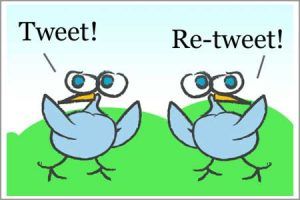Cutting up your speech into 140-character Tweets
A few nights ago, I was asked to deliver a speech at a Media Aces dinner on what makes a great presentation. Below is a resume of what I said, but the point I wanted to highlight, thanks to a comment by Fadhila Brahimi — a master presenter who is speaking at TEDx Algiers in April 2011 — was the idea that, as you speak, consider the sound bytes you deliver as Twitterable tweets. There are two key notions that make this concept worth bearing in mind:
- From a pedagogical standpoint, the idea of a marked 140-character phrase can help anchor the thought, especially if you repeat the key phrase for emphasis.
- From a new-age digital media standpoint, with the increasing numbers of twitterati, you can help the amplification of your presentation if you deliver sharp, crisp phrases that can be tweeted out.
What makes a great presentation?
So, here is the resume of what I believe makes a great presentation.
First, I must start at the beginning. Open with a meta statement, an epithet or catchall phrase (i.e. less than 140 characters) that basically captures the essence of your speech and which will provide a backbone to the entire corpus. In my case, my opener was : “Great presentations come in three’s.”
- Great presenting is like great teaching. Pedagogical skills are very important in making a lasting impression in a presentation. For example, make it interactive to allow for more social learning. Storytelling is another great technique. Use the technological tools as a teaching support, not as a crutch. Slides (if there must be slides) cannot double as useful handouts. Another example: be focused on your audience — be in their chairs. Feel their energy.
- Confidence is the core building block of a great presenter. You must therefore dedicate the time to building that confidence, creating the right environment for success. Allow the time for the proper preparation. Make sure you understand the brief and know as much as possible about the client / audience. Beyond confidence — and helping to reinforce one’s self-assurance on stage — is the mastery of the content. Once the content is solid, you focus on the context, or the style of the presentation.
- Less is More. Three key words to delivering a great presentation. Yes, don’t try to overkill in delivering a fully comprehensive presentation. Make three meta or major points. No more. Tell them what you are going to tell them. Tell them. Then tell them what you told them. Three steps. The brain feels much more comfortable trying to remember three points. If you manage to get the audience to remember one of those three points, six months down the line, then you should consider your presentation a success. And, under the banner of ‘less’ I would also add the use of silence, the power of the pause.
The more I wrote this post, the more I thought about how blog posting could also do with more “tweetable quotes,” too. What are your thoughts?
ADDENDUM 14/3/2011: It appears that the comments section for this particular post is NOT working. Am trying to figure out the case. If you care to contact me directly, please send a mail to DIALMINTER (all one word) at GMAIL dot COM!












tu n'evoques pas le ice breaker en préambule ?
Toi le grand maitre en la matière !!!
Tu ne veux pas tout dévoiler c'est cela ?
Amicalement
Fortunately, Eric, you write in French so most of the readers will not find out the error of my ways! An ice breaker, a few well placed jokes, body language, rhythm, eye contact… It is, in the end, a complex undertaking, which can always be improved upon!
Interesting article.
Any views on what should be the ideal length for a presentation?
Also, Power Point may be taboo these days, but do you really expect people do speak with no slides for a reasonable lngth of time? I think that places quite a demand on the speaker's ability and the audience's capacity to listen attentively…
All the best
John
@John: No real guidance on the ideal length of a presentation, except to say that the more interactive and lively it is, the better the chances you will be able to hold an audience… However, anything that lasts longer than 90 minutes (including Q&A) is probably too long. Better to be focused on the key message you want to deliver and keep it shorter, rather than try to say too much.
As for PowerPoint, it is still a tremendous tool for presentations when used well; however, too often it is used as a crutch, with far too many words, trying to serve as a handout as well as visual cue for the presenter. That is when PPT is no longer a good tool.
Different messages and contexts demand different solutions. Inevitably, the charm and presence of the speaker will trump a good PPT presentation…
I personally prefer Keynotes to PPT because of its better graphics and surprising effects, but Microsoft has made plenty of improvements too.
Voila, some thoughts.